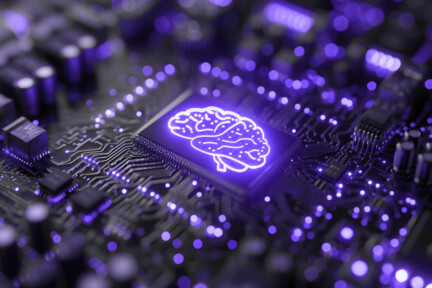According to GMI, the AI education market will reach around $20 billion by 2027. That statistic doesn’t just tell you about the growing importance of Artificial Intelligence in education; it also signals a transformative shift in the way we learn and teach.
Curious about how exactly AI technology is transforming the educational landscape? You’ve landed at the right place.
Here’s a sneak peek into what we’ll cover today:
- How is artificial intelligence used in education?
- How AI is enhancing educational accessibility and inclusivity.
- The emerging trends in AI-driven educational tools and resources.
- Ethical considerations and challenges in implementing AI in educational settings.
- Real success stories demonstrating AI technology in Education.
P.S., as we explore the world of AI in education, don’t forget to check out Miquido. Known for our innovative approach, Miquido seamlessly blends technology and creativity to enhance your educational strategies. It helps you pave the way for a smarter, AI-driven learning environment.

How exactly is AI Used in Education?
In the rapidly evolving field of education, Artificial Intelligence has emerged as a transformative force. Currently, AI in education is primarily focused on personalizing the learning experience, enhancing teacher effectiveness, and improving administrative efficiency.
Here’s how artificial intelligence is used in education:
- Personalized Learning: AI algorithms analyze students’ learning styles, strengths, and weaknesses. This leads to the creation of tailored educational content that caters to individual needs. For instance, AI-powered platforms can recommend resources and adjust difficulty levels based on student performance big data.
- Teacher Assistance: AI tools assist teachers by automating routine tasks like grading papers and attendance, freeing up time for more personalized student interaction. Moreover, AI can provide insights into student performance, helping educators identify areas where students struggle and need additional support.
- Intelligent Tutoring Systems: These intelligent tutoring systems use AI to adapt material to fit the learning pace and style of each student. They monitor student progress and continually adjust the content, offering a more dynamic and responsive learning environment.
- Language Learning & Presentation Translator: AI-powered language learning apps and translation tools have made language acquisition more accessible. These applications use natural language processing to provide interactive lessons, practice exercises, and instant translation services, breaking down language barriers in education.
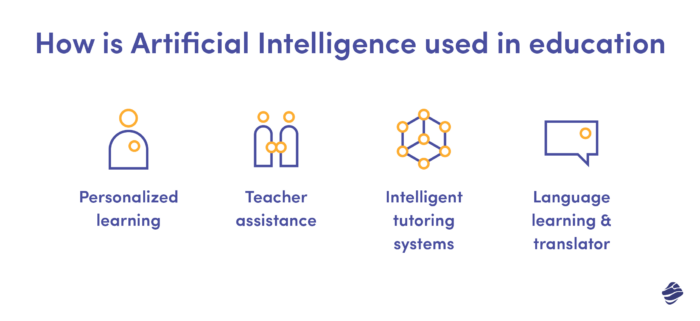
The Role of AI in Revolutionizing Educational Technology
According to the BestColleges, around 61% of college students in the US believe AI will become the norm. Wondering why? Well, it’s simple: AI has revolutionized the education sector by enhancing the capabilities of existing tools and paving the way for innovative solutions. For instance:
- Smart Content Creation & Recommendation: AI chatbots and voice assistants are helping educators create and curate educational content. AI-powered content generation tools can generate practice questions, quizzes, and even lesson plans.
- Data-Driven Decision-Making: Educational institutions are leveraging AI to make data-driven decisions. AI can analyze vast amounts of data to identify trends, assess the effectiveness of teaching methods, and inform curriculum development. By using these insights, educators can improve the quality of education.
- Accessibility & Inclusivity: AI is enhancing accessibility and inclusivity in education. Speech recognition and text-to-speech technologies aid students with visual or hearing impairments, making it easier for them to engage with educational content.
5 Key Challenges Associated With the Use of Artificial Intelligence in Education
Artificial intelligence is increasingly being integrated into educational solutions, since it offers countless benefits for both teachers and students. However, these benefits come with some challenges.
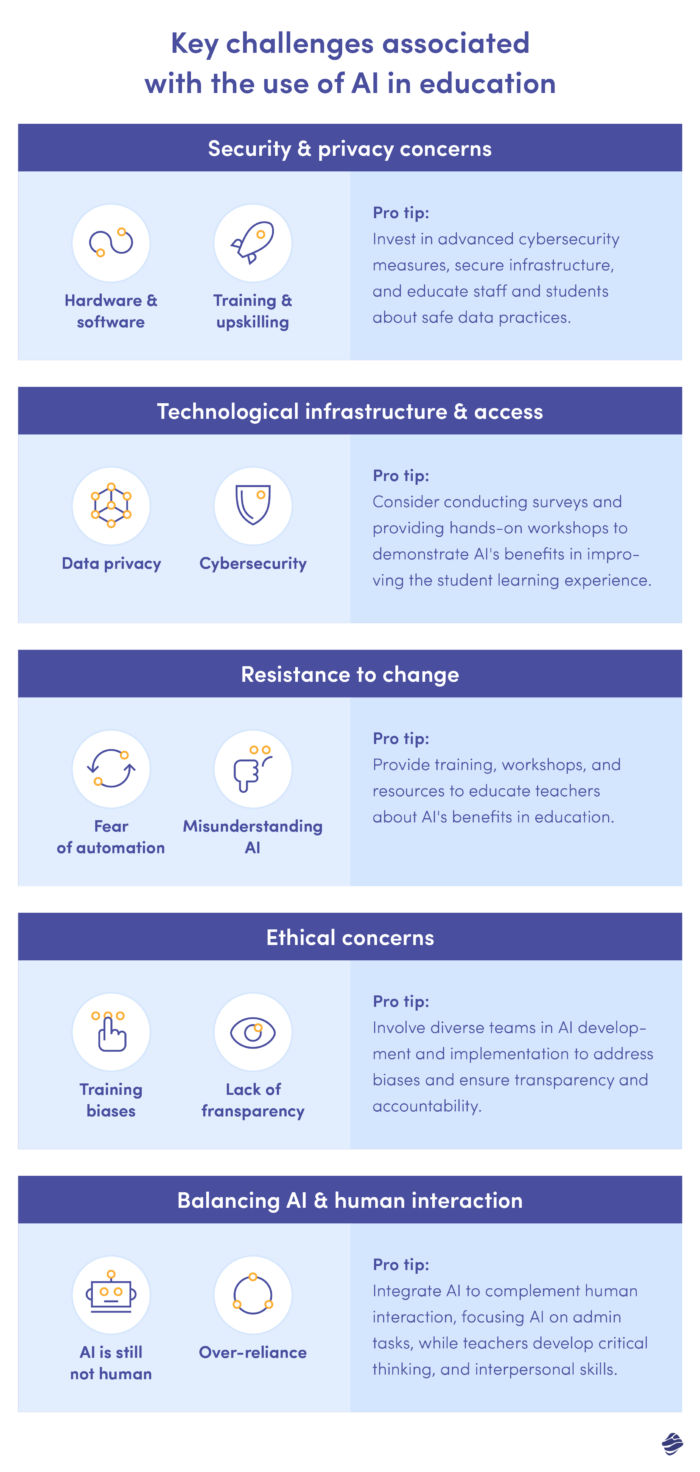
Let’s uncover some key barriers:
1. Security & Privacy Concerns
One of the most significant challenges of integrating AI in education is managing security and privacy concerns.
- Data privacy: AI systems often require access to large amounts of personal data to function effectively. It raises questions about student data privacy and the potential misuse of information. The challenge lies in implementing AI solutions that respect privacy laws, such as GDPR in Europe, and maintaining the confidentiality of student data.
- Cybersecurity: Moreover, the risk of data breaches and unauthorized access to student information is a major concern. Schools and educational institutions must ensure robust cybersecurity measures to prevent any potential threats.
Pro Tip: Educational institutions must invest in advanced cybersecurity measures to safeguard against potential threats. This involves not only securing the infrastructure but also educating staff and students about safe data practices.
2. Technological Infrastructure & Access to AI Systems
Another key challenge is the need for adequate technological infrastructure.
- Hardware & software: Many educational institutions, especially in less developed areas, lack the necessary hardware and software to support AI integration. This digital divide can trigger existing educational inequalities, as students without access to AI-enhanced learning may fall behind their peers.
- Training & upskilling: Implementing AI in education requires significant investment in technology and training. Teachers and educators need to be trained to use AI tools effectively, and ongoing support is essential to troubleshoot issues and update machine learning systems.
This represents a substantial financial and logistical challenge for many educational institutions.
Key Insight: Struggling to convince your teachers that AI is a usfeul tool? A survey from Quizlet found that 48% of teachers say AI improves the student learning experience.
3. Resistance to Change
Resistance to change is a common challenge in integrating AI into educational solutions.
- Fear of automation: Educators and administrators may be hesitant to adopt AI technologies due to concerns over replacing human elements in teaching. The fear that AI could automate aspects of education, leading to a reduction in teacher-student interactions, can create resistance.
- Misunderstanding AI: Additionally, there is often a lack of training and understanding of AI technologies among educators, which fuels resistance. Many may view AI as a threat to their job security or believe it will make teaching obsolete.
Pro Tip: Without proper training and a clear demonstration of the benefits of AI in enhancing educational outcomes, educators might view AI integration as an unnecessary or even disruptive change. Offer hands-on workshops, webinars and other resources to educate teachers about the benefits of AI in education.
4. Ethical Concerns
The integration of Artificial Intelligence (AI) in education raises significant ethical concerns. One of the primary issues revolves around the potential for bias in AI algorithms.
- Training biases: Since AI systems often learn from existing data, they can inadvertently amplify existing prejudices present in that data. This can lead to unfair treatment of students based on race, gender, or socioeconomic background, undermining the principles of equitable education.
- Lack of transparency: AI algorithms often operate as black boxes, meaning that we can’t always understand their decision-making processes. This lack of transparency can be a significant ethical concern, especially when AI systems make decisions that directly impact students’ education.
Pro Tip: To address these ethical concerns, it is essential to have diverse teams involved in the development and implementation of AI in education. This will help identify and eliminate potential biases in the data used to train AI systems, as well as ensure transparency and accountability in decision-making processes.
5. Balancing AI & Human Interaction
Balancing AI and human interaction in your educational process is crucial.
- AI is still not human: While AI can offer efficiency in managing educational tasks, it cannot replace the essential human elements of teaching — emotional support, motivation, and the development of social skills.
- Over-reliance: Moreover, over-reliance on AI can reduce students’ critical thinking and problem-solving skills. AI should be used as a tool to complement and enhance human teaching, not replace it.
Educators need to find the right mix of AI-assisted and traditional learning methods to foster a comprehensive educational experience that develops both technical and soft skills.
Pro Tip: You can achieve a balanced approach by integrating AI in ways that complement rather than replace human interaction. For example, use AI for administrative tasks and personalized learning paths, while teachers focus on developing critical thinking, creativity, and interpersonal skills.
Of course, navigating these challenges can be difficult, but not when you have a partner like Miquido -an Artificial Intelligence app development company. Our expertise in developing user-friendly, secure, and efficient AI solutions addresses these challenges head-on while enhancing the overall learning experience for students.
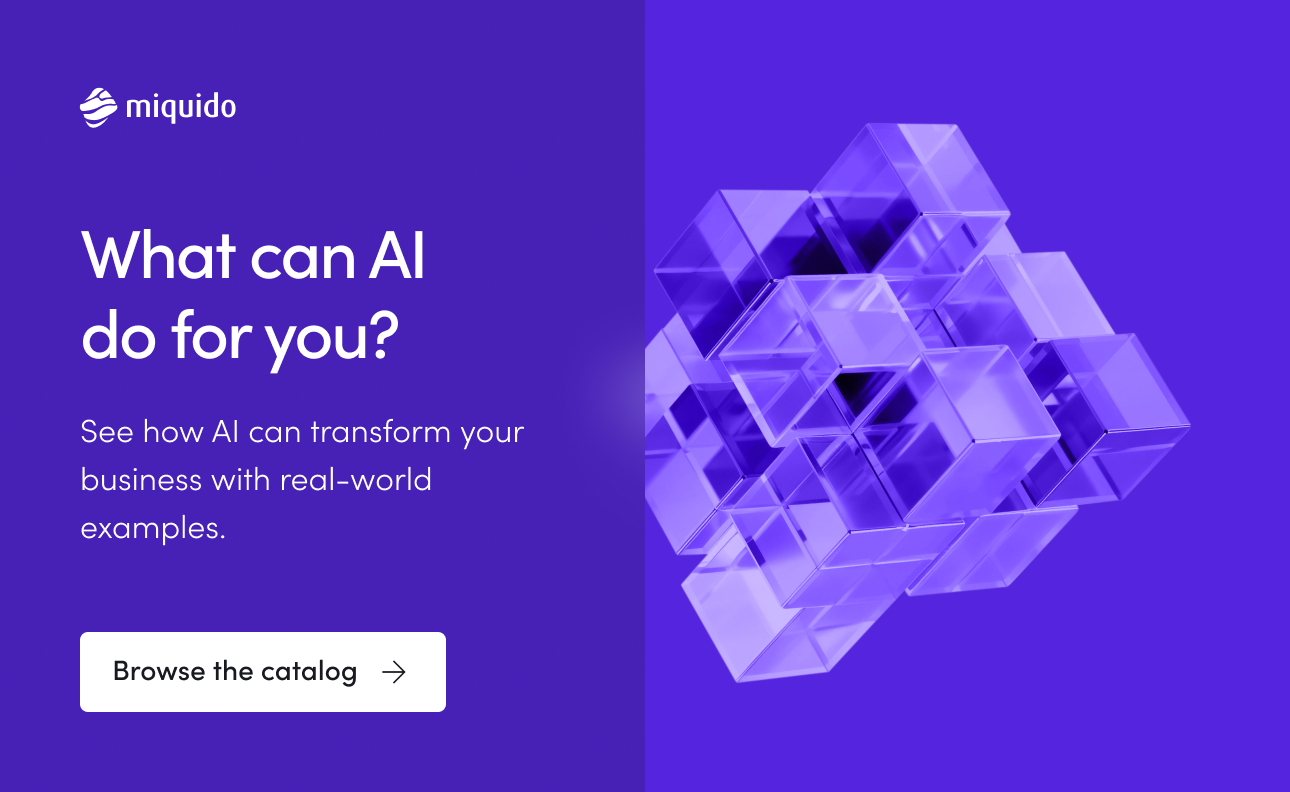
Lucrative AI-Driven Opportunities for EdTech Developers
The integration of Artificial Intelligence (AI) in education has opened a plethora of opportunities for EdTech innovators and developers. Here are some key areas where AI-driven opportunities are particularly lucrative:
- Development of Personalized Learning Platforms: AI’s capability to analyze individual learning patterns and adapt content accordingly has immense potential. Developers can create sophisticated platforms that offer a personalized learning experience catering to the varied needs of learners.
- Enhancement of Teacher Tools & Resources: There is a growing demand for tools to assist educators in non-instructional tasks like grading, attendance tracking, and performance analysis. Developers can leverage AI and natural language to create such tools, thereby earning a handful of revenue.
- Language Learning Applications: The demand for language learning and generative AI development services is rising. Developers have opportunities to create apps that use natural language processing to offer interactive and immersive language learning experiences.
- Educational Interactive Games: Incorporating AI into educational yet interactive games can make learning more engaging and enjoyable. This is a challenging yet rewarding opportunity for EdTech innovators and developers.
Real-World Success Stories of AI in the Education Sector
1. Khan Academy
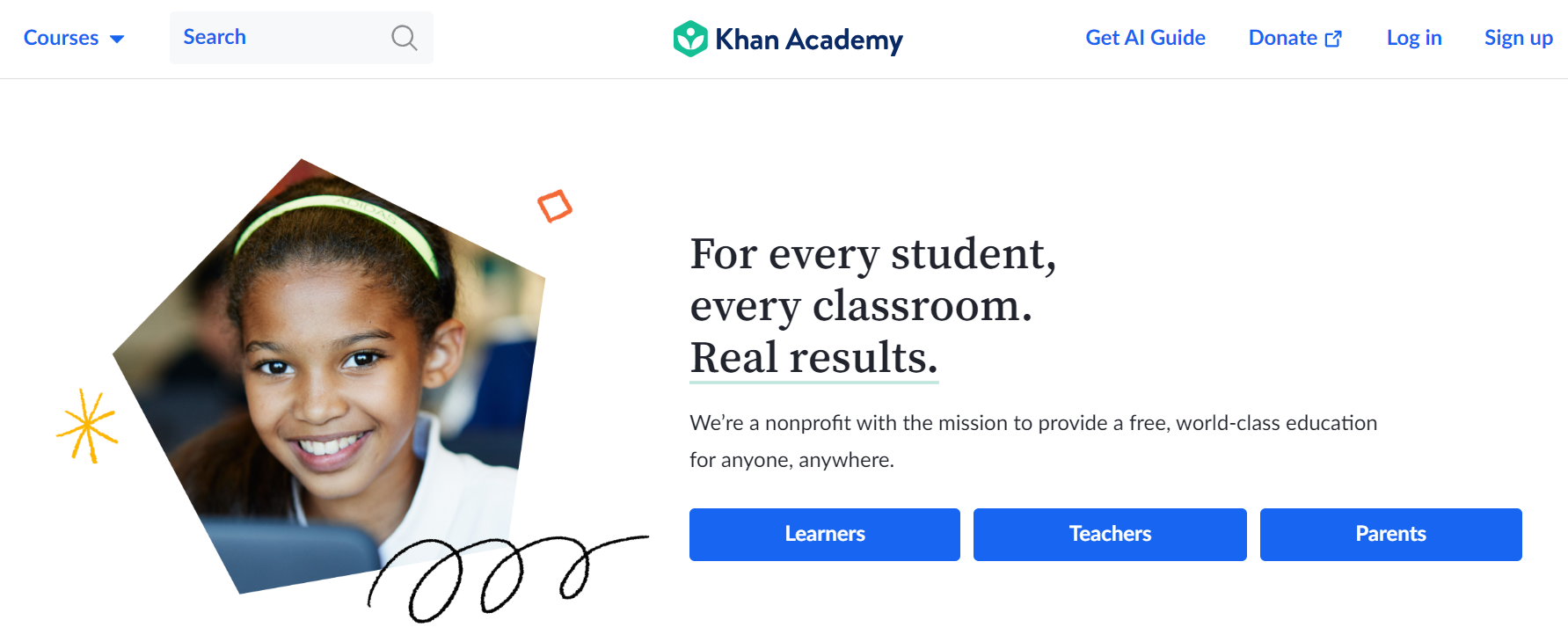
Overview: Khan Academy, a pioneer in free online education, has made a significant leap by introducing Khanmigo, an AI-powered tutor and teaching assistant. This innovation aligns with their mission of providing free, world-class education for anyone, anywhere.
AI Application: Khanmigo was piloted in various school districts with a focus on personalized learning experiences. It offers differentiated instruction, allowing educators to meet the diverse needs of students more effectively.
Results:
- Enabled tailored educational experiences by meeting students at their unique levels of understanding and learning paces
- Offered teachers new methodologies for classroom instruction, emphasizing AI’s role in creative and practical applications.
2. Georgia State University
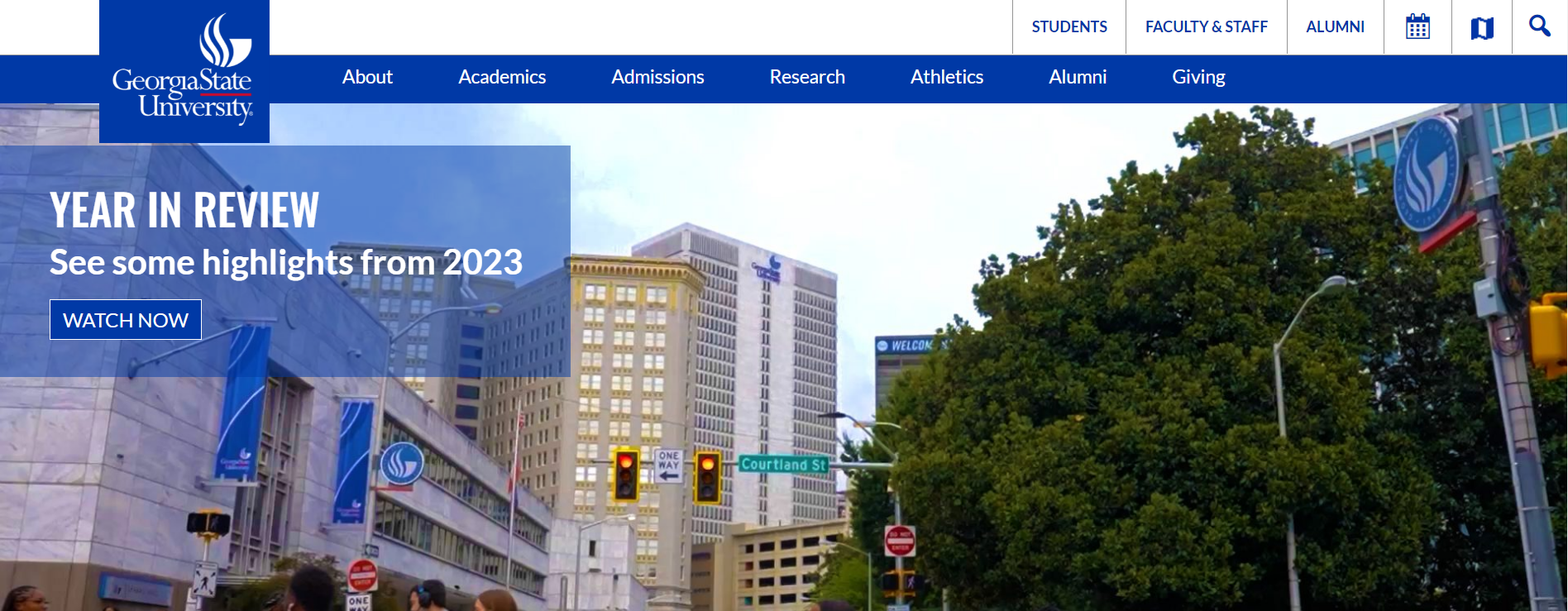
Overview: Georgia State University’s introduction of the AI chatbot Pounce is a landmark in using AI for student engagement and retention. Pounce was developed to address the challenge of summer melt – a phenomenon where students who have been accepted into a college or university fail to enroll in fall classes.
AI Application: In its first summer of implementation, Pounce delivered over 200,000 answers to questions from incoming freshmen. This, in turn, reduced summer melt by 22%.
Results:
- It led to higher enrollment and retention rates among students.
- Improved accessibility to information and support, especially outside of traditional office hours.
3. Oxford University Press (OUP)

Overview: OUP is at the forefront of integrating AI in English language teaching, focusing on ethical usage and keeping educators central to the learning process. They emphasize the development of AI tools that are trustworthy and enhance the human aspects of teaching.
AI Application: OUP advocates for AI tools that augment rather than replace human interaction in education. Their approach is grounded in enhancing teacher efficiency and providing resources that maximize the opportunities offered by AI.
Results:
- Reinforces the role of teachers by providing them with AI tools that simplify and enhance their work.
- Encourages a joint approach among various stakeholders in education to support the effective and ethical use of AI in teaching.
4. Ivy Tech Community College
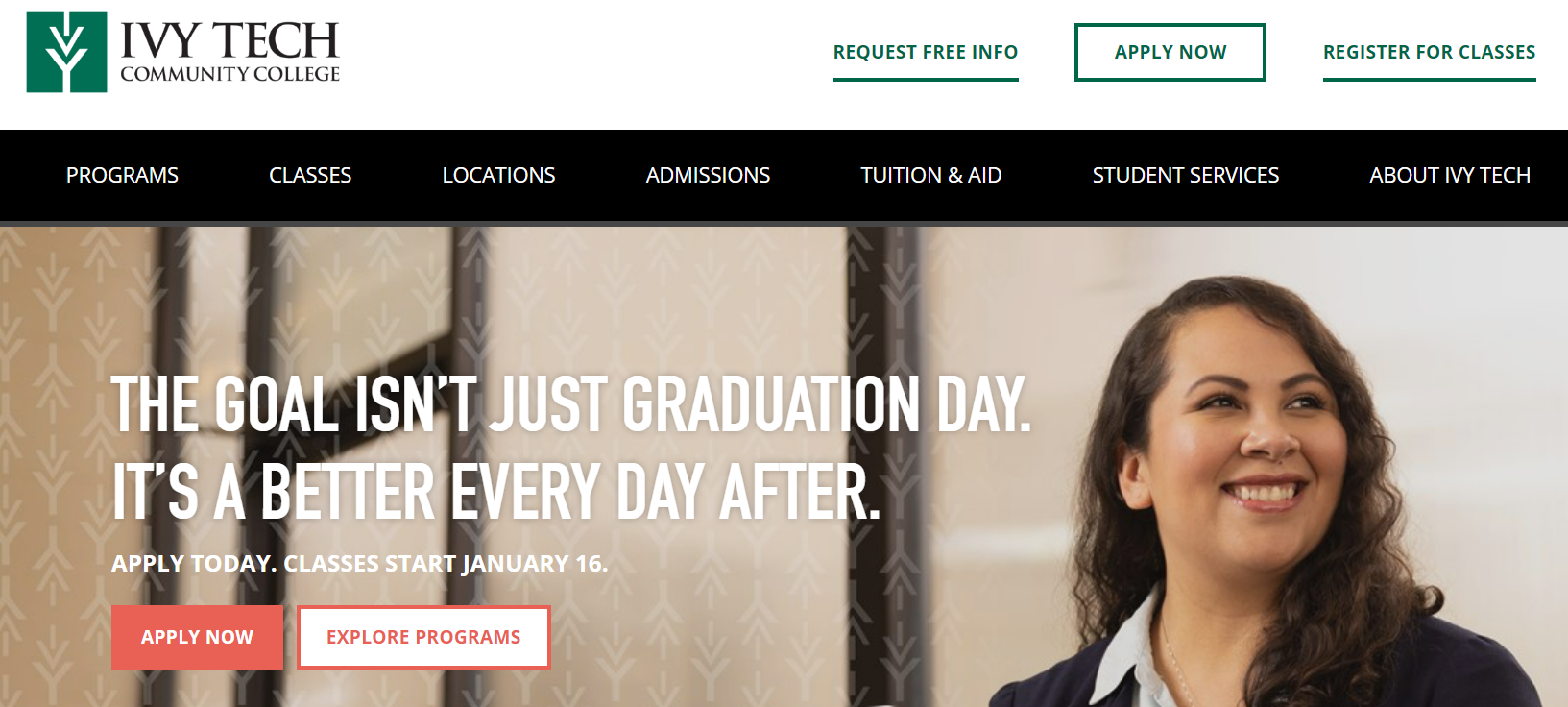
Overview: Ivy Tech Community College utilized AI for predictive analytics in education, identifying at-risk students early in the semester and significantly improving academic outcomes.
AI Application: The college employed data analysis to pinpoint students struggling academically. By intervening early, the college provided targeted support, substantially reducing failure rates.
Results:
- AI’s predictive capabilities enabled timely support for students, preventing academic failure.
- Facilitated informed decision-making by educators based on comprehensive data analysis.
Impact of AI on Administrative Efficiency in the Education System
The use of artificial intelligence in education significantly impacts administrative and operational efficiency in education offices. The application of AI in these areas streamlines processes, enhances productivity, and reduces the workload on staff.
Administrative Task Automation
- Automating Routine Tasks: AI significantly streamlines administrative processes by automating routine and time-consuming tasks like scheduling, student enrollment, and resource allocation.
- Data Analysis for Decision-Making: AI systems analyze large data sets to provide insights that aid in decision-making. This eliminates the need for manual data analysis, saving time and reducing errors.
- Budget Management: These insights are crucial in managing school budgets effectively. Administrators can analyze financial data, forecast accurately, and make informed decisions about resource allocation.
- Tracking Student Attendance: AI also plays a role in monitoring student attendance. Attendance tracking can predict student absences, identify patterns, and provide insights to improve attendance rates.
- Resource Requirement Prediction: AI helps predict future resource needs for better planning and allocation. With this knowledge, administrators can effectively distribute resources and reduce wastage.
Enhancing Operational Effectiveness
- Predictive Maintenance: AI-driven predictive maintenance anticipates servicing needs of equipment or facilities, thus preventing breakdowns. This leads to cost savings and uninterrupted operations.
- Optimizing Maintenance Schedules: This capability helps optimize maintenance schedules for better operational efficiency. Through data analysis, AI can identify the best time for maintenance, minimizing downtime.
- Improving Communication: AI enhances communication within the educational community, especially through AI-powered chatbots. These tools can rapidly answer common questions, freeing up administrative staff for more involved projects.
- Instant Response to Queries: Chatbots provide instant responses to a range of queries, from course information to administrative procedures. This feature increases efficiency and reduces the burden on staff.
- Boosting Accessibility and Responsiveness: This technology enhances the accessibility and responsiveness of educational institutions. Students and staff can receive real-time updates and information, improving overall communication and productivity.
- Focus on Complex Tasks: By handling routine inquiries, AI frees up staff to concentrate on more complex and critical tasks. This leads to better use of human resources and more efficient operations.
The 3 Major Future Trends Related to the Use of Artificial Intelligence in Education
Artificial Intelligence is rapidly transforming the educational landscape, offering new and innovative ways to engage students and enhance learning experiences. As we look towards the future, here are three major trends associated with the integration of AI in education:
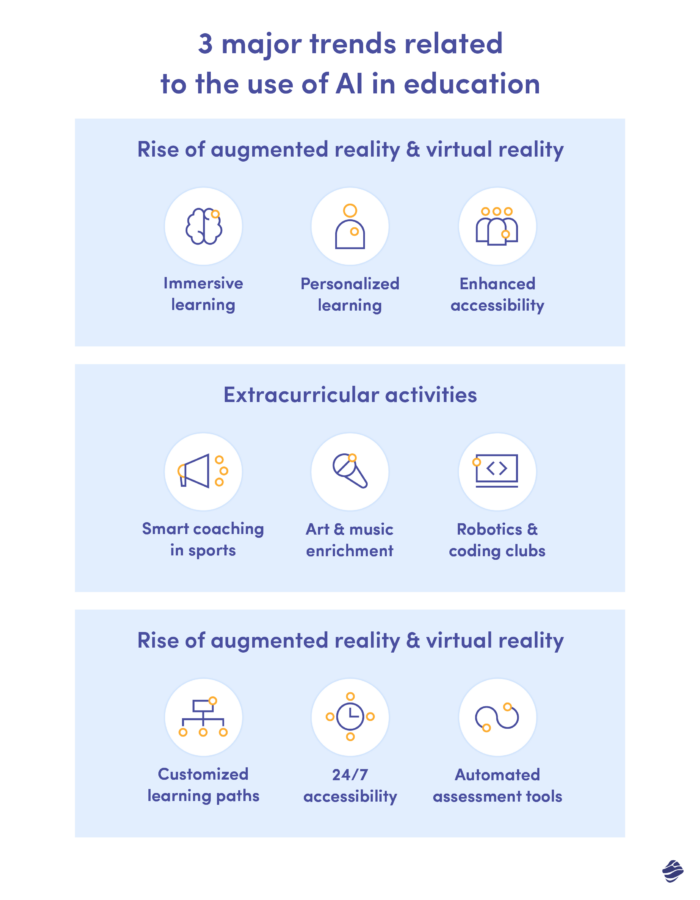
1. Rise of Augmented Reality (AR) & Virtual Reality (VR)
AR and VR are set to revolutionize the educational sector by providing immersive learning experiences. These technologies, powered by AI, can bring abstract concepts to life, making learning more interactive and engaging. Here are some key aspects:
- Immersive Learning: AR and VR create a 3D, immersive learning environment. This can be particularly beneficial in subjects like science, history, and geography, where students can virtually explore different environments, historical events, or complex biological processes.
- Personalized Learning Experiences: AI algorithms can tailor AR and VR experiences to individual learning styles and needs, ensuring that each student can learn at their own pace and in a way that best suits them.
- Enhanced Accessibility: AR and VR can make education more accessible, especially for students with disabilities. For instance, VR can provide visually impaired students with tactile and audio-based learning experiences.
2. Extracurricular Activities
AI is not just transforming traditional classroom learning but is also making a significant impact on extracurricular activities. This includes:
- Smart Coaching in Sports: AI-powered tools can analyze performance in sports, providing personalized feedback and coaching to students. And guess what? Such use of AI in entertainment enhances their skills more effectively.
- Art & Music Enrichment: In arts and music, AI tools can help create and modify artwork or music, offering students a new avenue to express their creativity and learn new skills.
- Robotics & Coding Clubs: AI is central to robotics and coding, which are increasingly popular in extracurricular clubs. These activities not only teach technical skills but also foster problem-solving and creative thinking.
3. Digital Learning Platforms
The rise of digital learning platforms represents a major shift in how education is delivered and consumed. In fact, the e-learning market size is expected to reach around USD 375 billion by 2026.
These E-learning platforms, enhanced by AI features in mobile apps, offer:
- Customized Learning Paths: AI can analyze a student’s performance, learning style and writing skills, offering customized lesson plans and resources.
- 24/7 Accessibility: Digital platforms provide the flexibility to learn anytime and anywhere, breaking down geographical and time barriers.
- Automated Assessment Tools: AI can automate the grading process, providing immediate feedback to students. This not only saves time for teachers but also allows for more consistent and objective assessments.
AI Adoption Diversity in The Education Market: A Global Perspective
The adoption of AI in business varies significantly across different regions and countries. This diversity can be viewed from a global perspective, highlighting unique trends, challenges, and innovations.
How is artificial intelligence used in education in different regions?
- North America: In North America, AI in education primarily focuses on personalized learning and efficiency enhancement. Advanced analytics and machine learning algorithms are widely used to tailor educational content to individual student needs, monitor progress, and provide targeted interventions.
- Africa: The African continent presents a different picture. Here, AI in education often addresses fundamental challenges such as access to education and resource allocation. In rural areas or regions with limited educational infrastructure, AI-powered solutions are being employed to provide e-learning opportunities.
- South America: In South America, AI in education primarily addresses educational disparities and helps to reach remote or underserved communities. AI-powered platforms are being used to offer quality education resources in areas with limited access to skilled teachers or educational materials.
- Asia: Asia presents a dynamic and diverse landscape for AI in education. Countries like China, South Korea, and Japan are at the forefront of implementing AI in sophisticated tutoring systems and educational robotics. Meanwhile, India, Pakistan, and North Korea are utilizing AI to improve educational access and address language barriers.
- Europe: Europe’s approach to AI in education is characterized by a strong emphasis on ethical considerations and data privacy. European educational institutions are increasingly adopting AI programs for personalized learning, but with a cautious approach that considers the implications on student data privacy and ethical AI usage.
Miquido & Brainly Collaboration: Case Study
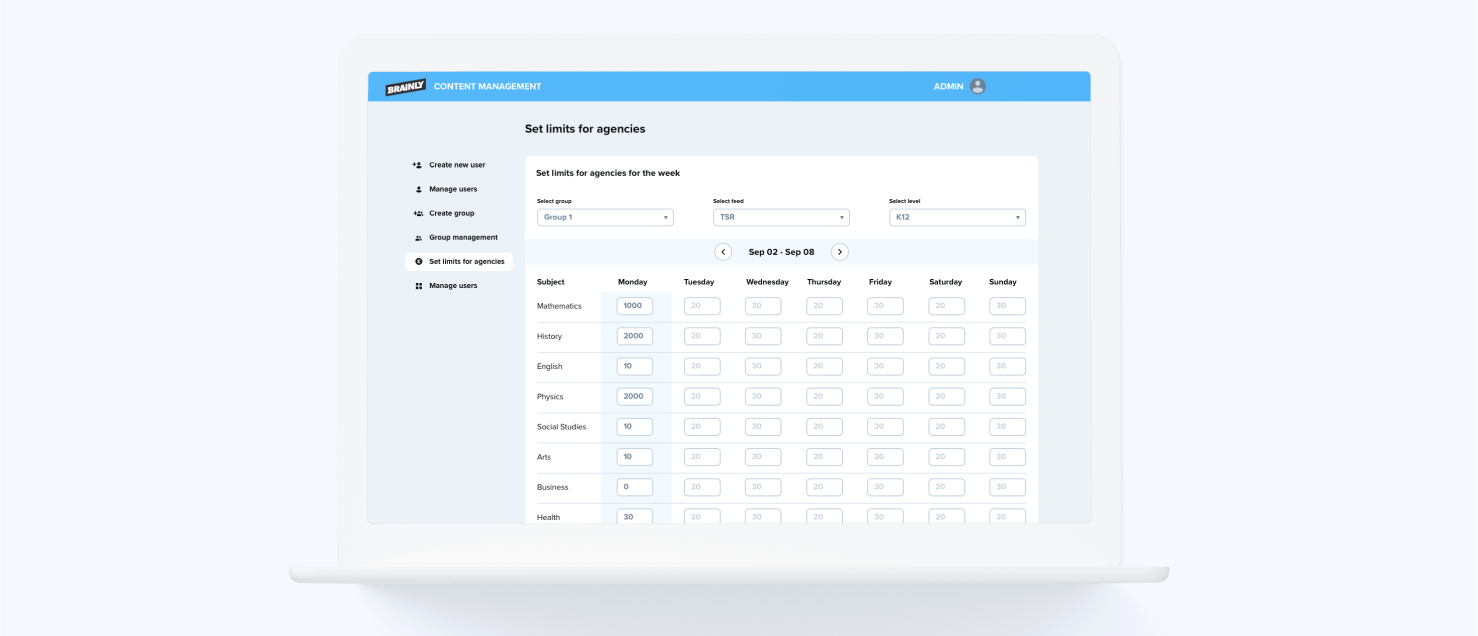
As a leading software development firm, Miquido is considered a go-to choice for education app development. That means we know what it’s like integrating new tech into existing applications. Look no further than our collaboration with EdTech platform, Brainly:
Challenge
Brainly needed an efficient solution for managing a high volume of answer requests from students worldwide.
Approach
Miquido developed the “Brainly Content Tool,” a web platform facilitating the management of answer requests. The solution aimed to optimize the workload of answer providers and efficiently distribute tasks.
Results
- Increased Efficiency: 50% of questions answered within 24 hours.
- Enhanced Productivity: Doubled the targeted benefit rate.
- Time Savings: Saved an average of 3 hours per week for each user.
Miquido — A Premier Choice for Facilitating Use of AI in Education Sector
To wrap it all up, the use of Artificial Intelligence in education represents a significant leap forward in the way we approach teaching and learning. By harnessing the power of machine learning, generative AI use cases, and predictive analytics, educational institutions can offer personalized learning experiences, optimize administrative tasks, and provide insightful data to improve overall educational outcomes.
Key Takeaways:
- AI personalizes learning experiences for students.
- It provides valuable data for educators to improve teaching methods.
- The use of AI in education sector streamlines administrative tasks.
- It supports inclusive education for students with diverse needs.
In this evolving educational landscape, staying ahead of the curve is crucial: this is where Miquido steps in. We don’t just create software; we craft experiences that resonate with the needs of modern education systems. By integrating Miquido’s AI solutions, educational institutions can leap into a future where technology and learning exist in perfect harmony.
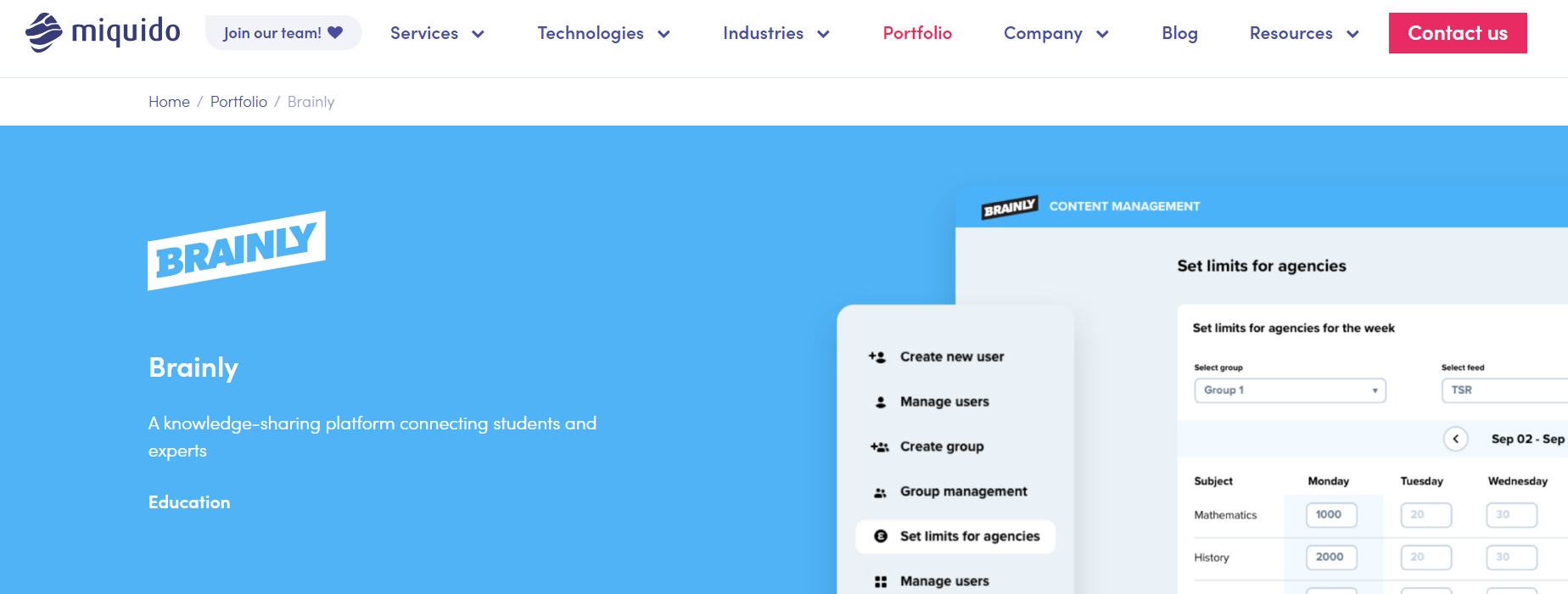
How does AI facilitate remote and online learning?
AI enhances remote and online learning by offering personalized educational experiences and interactive content. Advanced systems like generative AI tools employ virtual tutors and adaptive learning systems to cater to individual learning styles. AI also monitors student engagement and performance, ensuring effectiveness even in the absence of physical classroom interaction, making distance learning more efficient and interactive.
Can AI replace teachers in the classroom?
AI is not designed to replace teachers but to support and enhance the student learning process. It automates administrative tasks, provides personalized learning tools, and offers data-driven insights. This augmentation allows teachers to focus more on interactive and creative aspects of teaching, enhancing the overall educational experience without replacing the human element.
Does AI contribute to career guidance and counseling?
AI significantly contributes to career guidance and counseling by analyzing student data, interests, and market trends to provide personalized career advice. It helps in identifying suitable educational pathways and career opportunities, aligning students’ skills and aspirations with real-world demands. This tailored approach makes career counseling more efficient and relevant for early childhood education.







